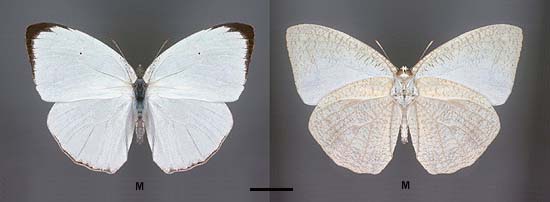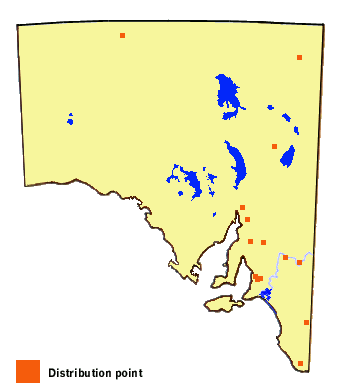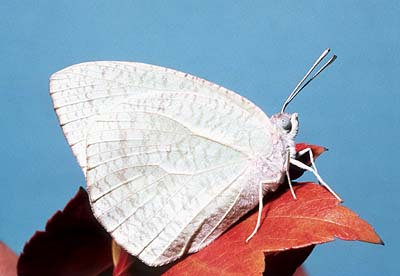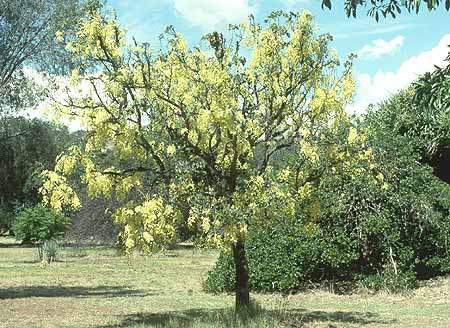White Migrant
Catopsilia pyranthe crokera (W.S. Macleay)

Interesting Aspects
The butterfly occurs as pale and dark forms that differ mainly in the width of the black colour along the wing margins, which is better developed in the dark forms, and that the dark form has black antennae while the pale form has pink antennae. Both forms fly together and can be produced from the same batch of eggs. Genetic dominance studies have not been undertaken. It has been reported that in southern Queensland only the dark form is present from January to March, and only the pale form between May and September. Both forms flew during April, while very few butterflies occurred between October and December. Both forms reach South Australia during migrations, with the dark form being the most common, although the pale form extends the furtherest south.
Observations in the eastern states indicate that the early stages of the butterfly are unable to survive frosts or extended cold periods. The butterfly is the most cold tolerant of the Catopsilia species.



